Bush clematis: varieties, planting, care and reproduction
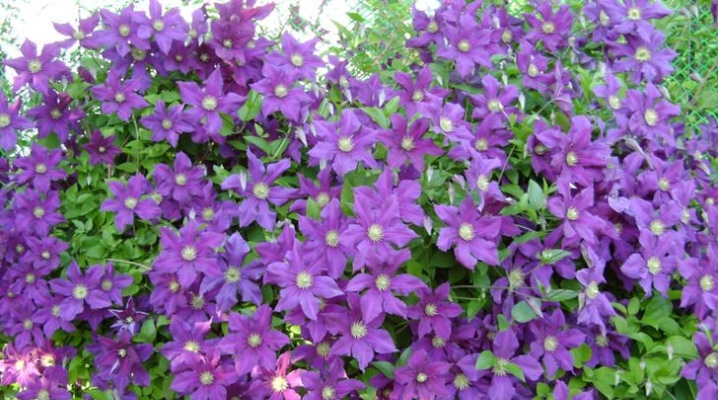
Graceful bush clematis during the flowering period turn the backyard area into a real garden of paradise. With the help of these amazing plants, you can transform any corner of the site, decorate its not the most attractive places. What varieties of bush clematis are used in landscape design? What are the nuances of planting and growing them? We will tell you about all this in our article.
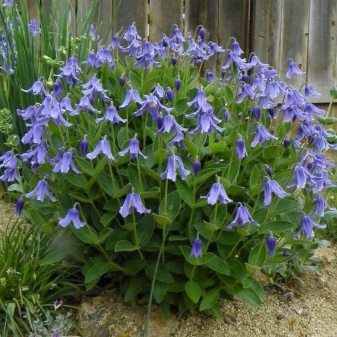
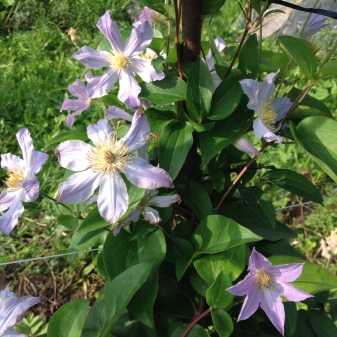
Description
Shrub clematis (another popular name is clematis) are unpretentious flowering perennials, the height of which can vary from 0.5 to 2 meters. Most varieties of these plants delight with flowering for several months - from about the beginning or mid-summer to late autumn.
Among gardeners, bush clematis are especially popular, which they are provided with amazing unpretentiousness, endurance, frost resistance. These features allow plants to take root even in regions with a harsh climate, including the Urals and Siberia.

The shape and size of the leaves, as well as the color of flowers in bush clematis, depend on the variety. The most common varieties are star-shaped or bell-shaped.
The color palette is quite extensive, including milky white, lilac, purple, lemon yellow and even burgundy brown shades.
The root system of these perennial shrubs can be pivotal or fibrous... The color of the leaves in most varieties is juicy green. However, there are also clematis with purple-burgundy leaves.
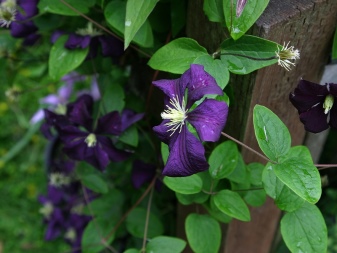
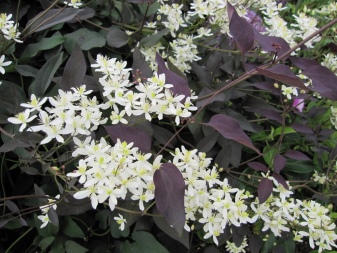
Experienced growers divide all varieties of bush clematis into 2 large categories:
- large-flowered;
- small-flowered.
The first category includes solid-leaved clematis, in which flower sizes can reach 10-12 centimeters. In some hybrid plants, flower sizes can reach 20-25 centimeters. The second category includes clematis with small flowers, whose size does not exceed 3-4 centimeters.
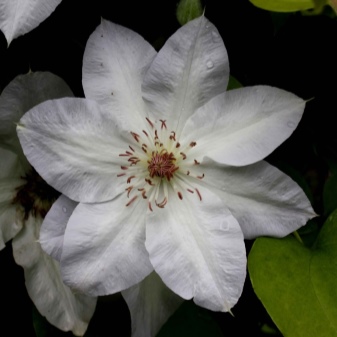
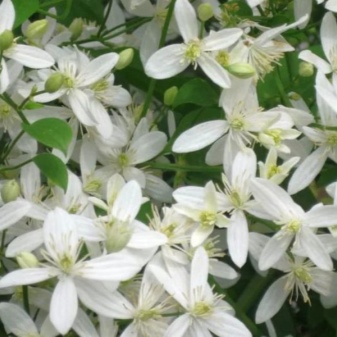
Varieties
In modern gardens, you can find large and small-flowered, tall and low-growing plant varieties. Below are the most popular ones.
- "Memory of the Heart" - a very common flowering variety used in landscaping home gardens. This is a relatively tall shrub, the height of which can reach 2 meters. Plants of this variety are characterized by intensive formation of lashes, abundant and long flowering. The flowers are large (up to 10 centimeters in size), bell-shaped, lilac-pinkish in color.
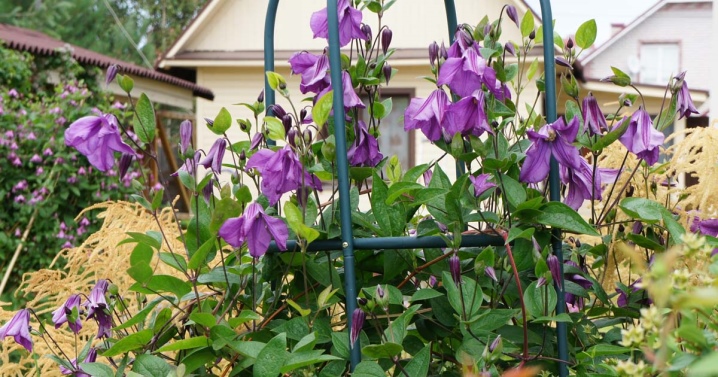
- Baby Rose Is a popular undersized variety with small but very beautiful flowers. The average height of a compact bush is about 70 centimeters. The plant acquires a special decorative effect during its lush flowering period. The flowers are fragrant, small (up to 4 centimeters), pale pink, bell-shaped.

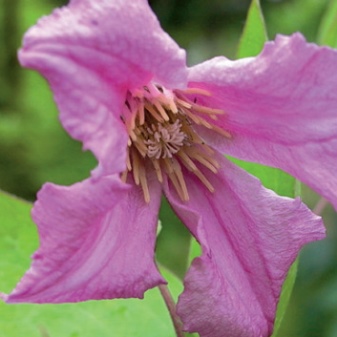
- "Radar of love" - a spectacular and fairly old variety that is widely used in landscape design. When strengthened on a support, this shrub actively grows in different directions, forming numerous shoots up to 3 meters long. The flowers are medium-sized (about 3-4 centimeters), sunny yellow, bell-shaped.
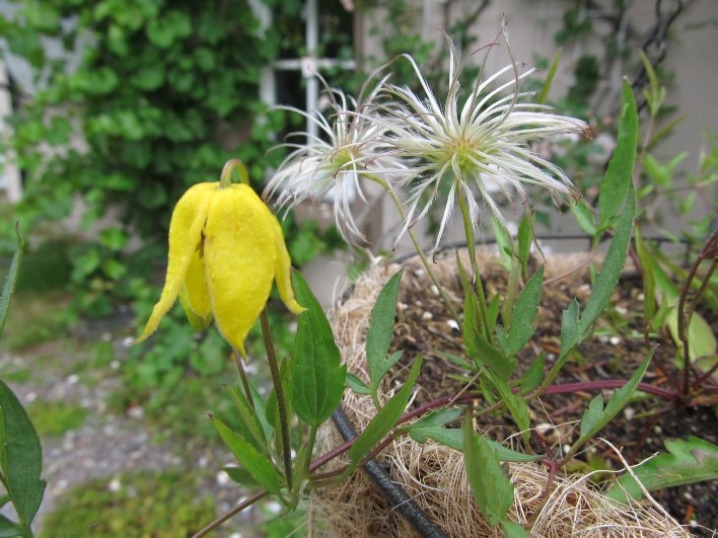
- "Alba" Is a very graceful medium-sized variety. The plant can be grown both as a bush, fixed on a support, and as a ground cover.The average length of the shoots varies from 0.8 to 1 meter. During the flowering period, it is covered with numerous milky-white small bells. The flowering period can be several months (from early summer to autumn).
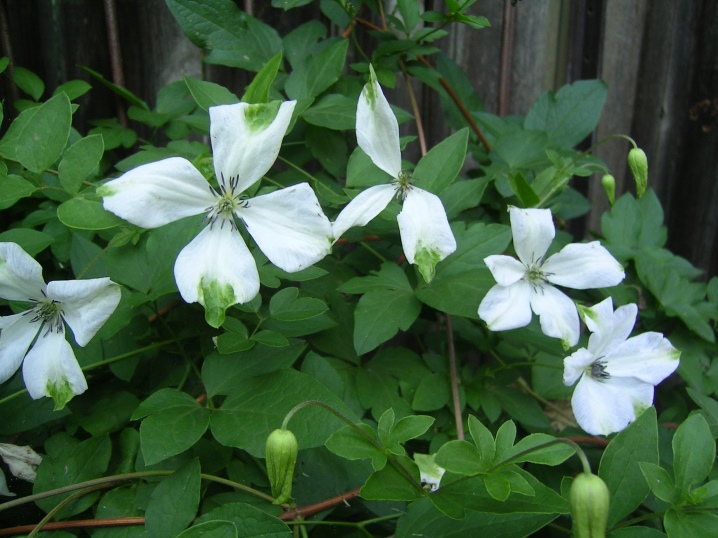
- New Love - very attractive flowering variety of low clematis. The average plant height reaches 65 centimeters. During the period of active growth of the vegetative mass, clematis of this variety form compact bushes covered with abundant foliage. The leaves are large, embossed, juicy green in color. The flowers are lavender-lilac with a yellow core, visually reminiscent of hyacinth flowers.
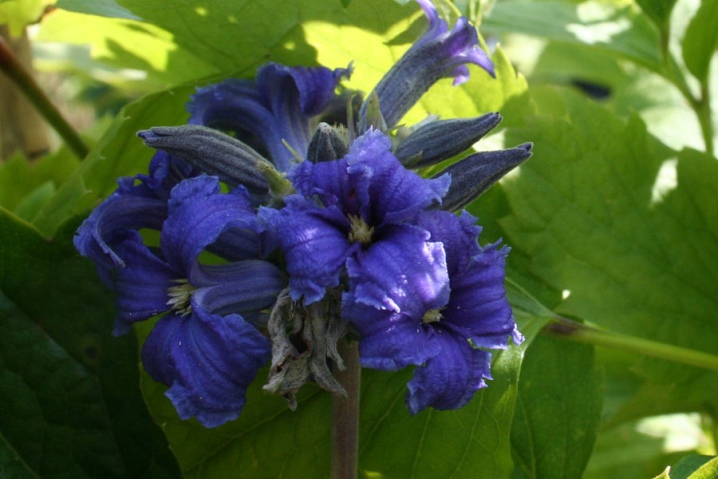
Landing
The timing of planting these flowering plants should be correlated with the climatic features of the area. So, in the northern regions, it is best to plant bush clematis in the spring. In the south, these plants can be planted in spring, summer and autumn.
Planting bush clematis should be done in sunny or slightly shaded areas. Approximately 6-7 months before planting seedlings, it is recommended to dig the ground in places where young plants are supposed to be placed. During the digging, a nutrient mixture is introduced from the following components (per 1 square meter of the area of the site):
- 10 kg of deciduous humus;
- 350-400 g dolomite flour;
- 100-150 g of superphosphate.
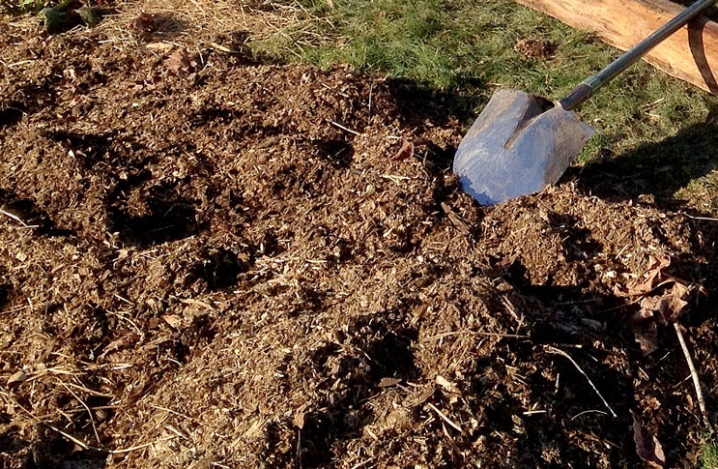
The average size of the planting holes is approximately 50x50x50 centimeters. The distance between the holes must be at least 150 centimeters.
Place at the bottom of the pits drainage layer 6-10 centimeters thick. Each pit is filled with a loose and light soil mixture consisting of fertile garden soil (2 parts), compost (2 parts) and sand (1 part). In addition to the mixture, it is recommended to add complex fertilizer and a little wood ash. The pits are not completely filled, focusing on the size and diameter of the roots of the seedlings.
Landing is carried out carefully, holding the plant upright with your fingers. The roots of the seedling should be gently spread out.
It is impossible to plant clematis with tangled, bent or stray roots.
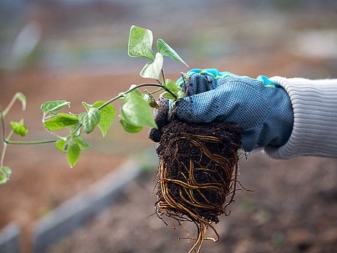
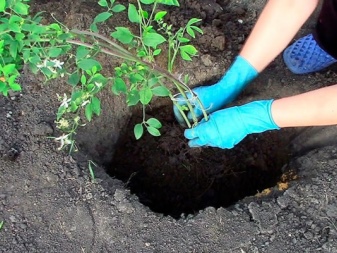
Having placed the seedling in the pit, carefully cover its roots with soil mixture from all sides. It is important to note that when planting young plants are recommended to be slightly buried in the ground, making sure that at least one bud remains on the surface. After planting, the soil around the seedlings is generously watered. In the future, watering is carried out every other day, spending about 7-10 liters of water for each young plant.
If perennials are planned to be used for vertical gardening, then during or after planting, a support must be placed next to the clematis... If the plants are supposed to be grown as ground covers, they will need to provide a sufficient amount of free space.
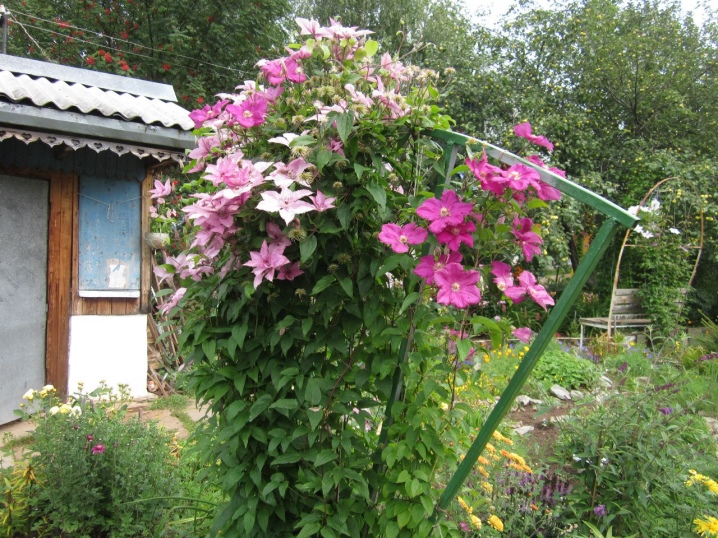
Care
Most varieties of bush clematis are quite hardy and unpretentious plants that do not require specific care. However, in order for these representatives of the world of decorative flora to feel good and bloom magnificently, the most comfortable living conditions should be created for them. That means:
- regular watering;
- timely feeding;
- mulching and loosening the soil near the bush.
Watering these flowering perennials should be done regularly.... Young plants are watered with warm water 1 time in 2 days, adult bushes - 1 time in 3-4 days. In gloomy, cool or rainy summers, the frequency of watering is significantly reduced. After watering, the land next to the plants is mulched.
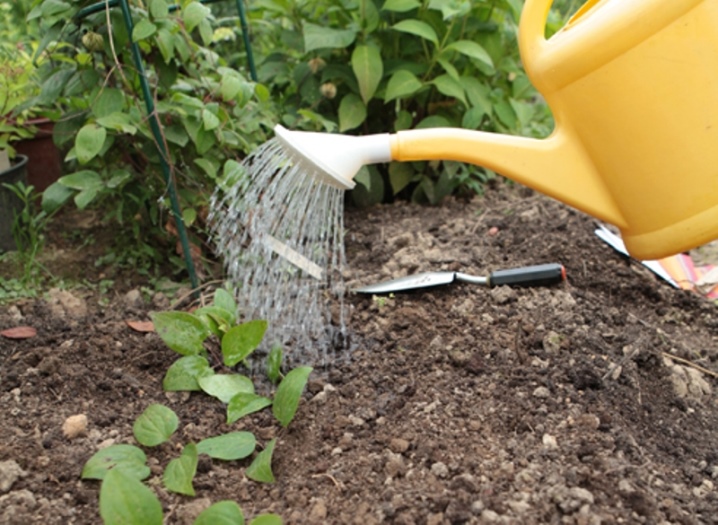
Timely application of dressings is an important condition on which the duration and quality of flowering of bush clematis depend. Experienced growers recommend feeding young plants with organic matter in the first year after planting, which will enhance the growth of green mass and roots.Mature shrubs are usually fed in spring, when plants are actively forming buds. Complex flower fertilizers are used as spring feeding.
Already flowering clematis, which spend a lot of energy on the formation of new buds, also require additional fertilizing. It is recommended to periodically feed such bushes with organic matter and mineral fertilizers or special phosphorus-potassium complexes.
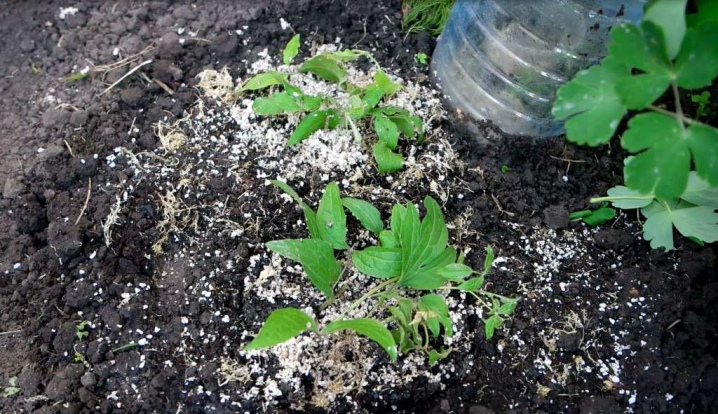
Mulching and loosening the soil around the bush are procedures on the implementation of which the health of the root system largely depends... Mulching prevents soil moisture loss and protects plant roots from overheating. Sawdust, wood chips, straw are usually used as mulch. Loosening, in turn, ensures normal air exchange in the soil, which is extremely important for the roots of clematis.
Deserves special attention autumn pruning of plants. Some varieties of bush clematis do not need it, because with the arrival of cold weather, their aboveground part completely dies off. The same plants that require this procedure are cut according to type 3, almost completely removing the entire aerial part to the ground with a pruner. Only a few shortened shoots with buds are left on the surface.
For the winter, they are insulated with a layer of straw or spruce branches, on top of which a non-woven covering material is laid. Clematis is insulated in the same way, in which, due to varietal characteristics, only the upper part of the bush dies off. In this case, the remains of the stems are bent to the ground and pinned, after which they are insulated.

Reproduction
Usually gardeners propagate bush clematis in popular vegetative ways, using:
- cuttings;
- layering;
- delenki (parts of the parent bush).
Cuttings are prepared at a time when the plant begins to prepare for flowering. Cuttings are cut from the middle of the strongest shoots. Each cutting should have at least 2 buds.
Before being sent to a greenhouse for rooting, the harvested cuttings are treated with a root formation stimulator for about 10 hours. Then they are planted in containers with loose soil mixture and covered with a film on top. In greenhouses, high humidity is maintained throughout the entire rooting process (average time - 2-3 months).
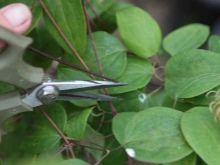

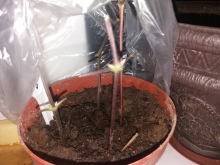
Good results are obtained by rooting cuttings from the parent bush. This method is usually used in the spring or early summer.
To carry out this procedure, you must:
- choose several strong and well-developed shoots on the mother plant;
- lay the shoots into the grooves previously arranged in the ground;
- dig in the shoots, leaving only the top and leaves on the surface.
The earth in places where shoots are dug is regularly moistened. Young bushes usually appear in the spring or fall of the next year. They are carefully separated from the parent plant and transplanted to a permanent place.
Mature bush clematis can be planted by dividing. For this procedure, in the spring (before flowering) or in the fall, strong and healthy five-year-old bushes are selected, which are carefully dug up and removed from the ground. The root ball on each plant is washed and dried, after which the bush is divided into several parts. Each part must have a sufficient number of roots and stems.
The division is made with a sharp ax or pruner. Each piece is planted in the planting pit in the usual way.

Diseases and pests
Shrub clematis are rarely affected by diseases or pests. However, often improper care and an unfavorable environment cause a sharp weakening of their immunity, which provokes the development of diseases and a decrease in resistance to pests.
Often weakened bush clematis are affected gray molddeveloping with excessive humidity and lack of light.A characteristic feature of this disease is specific dirty brown spots with a grayish fluffy bloom that form on the leaves and shoots. Treatment of the affected plant involves the complete removal of the affected stems and foliage and thorough treatment of the bush with the drug "Fundazol". Plants located next to infected clematis are also treated with it for the purpose of prophylaxis. In case of severe damage, the diseased plant must be destroyed.

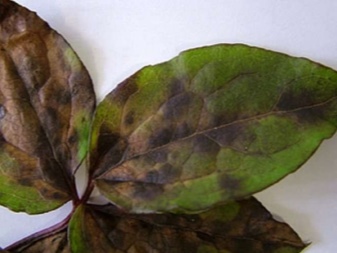
Another common disease of these flowering perennials is powdery mildew... Its specific feature is a gray-white powdery coating that covers the leaves and shoots of the bush. Treatment in this case involves the treatment of the plant with drugs "Fundazol" or "Topaz".
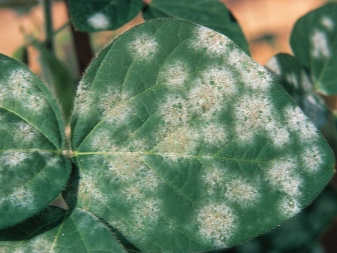
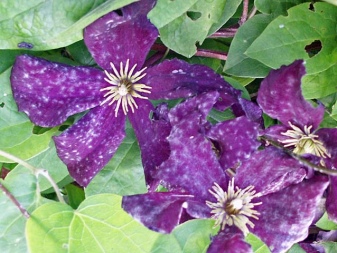
Good results are also obtained by treating the bush with a solution of soda ash, copper sulfate.
One of the most insidious enemies of bush clematis - bear... This gluttonous pest, making moves in the ground, severely injures the root system of plants. Getting rid of it is not easy. For this, a set of measures is used:
- setting up bait traps;
- spilling the pest moves with a concentrated soap solution;
- treatment of places where the bear was found with pesticides.
Many gardeners celebrate the effectiveness of specialized drugs against the bear. One of them is bioinsecticide "Metarizin".

The appearance of yellow spots and lumps of cobwebs on the leaves of clematis indicates that the plant is affected by spider mites. Dry and hot weather creates favorable conditions for the appearance of this parasite. To get rid of the pest, the affected clematis is treated with Actellik.
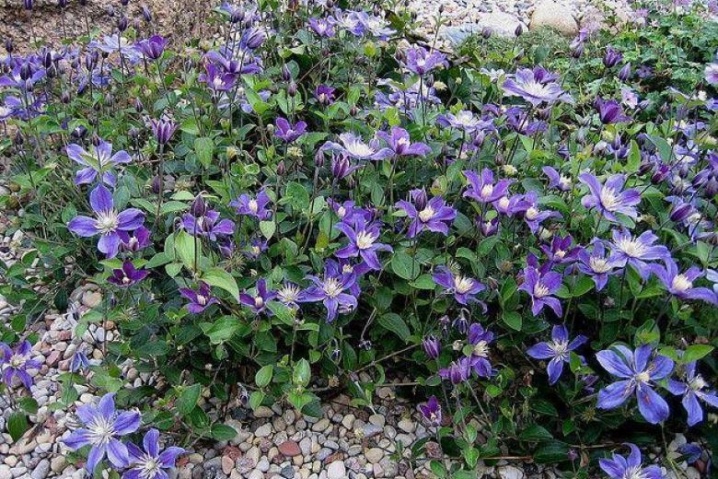
Examples in landscape design
In landscape design, bush clematis are used not only for vertical gardening, decorating walls, pergolas or arches. They are often grown as a ground cover, which is an excellent backdrop for low and medium-sized flowers.
Low-growing bush clematis (60-70 centimeters high) look organically in a duet with their liana-like relatives. Roses, jasmine, and low-growing varieties of mockery can also make a good company for them.

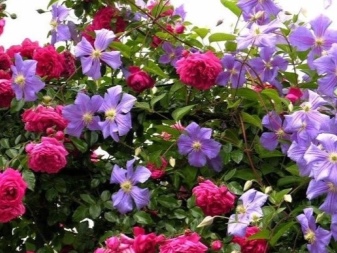
Growing bush clematis in partial shade, you can distinguish them against the background of the general landscape. So, hosts with white-green or yellow-green leaves will help to emphasize their magnificence during the flowering period, against which the clematis flowers will look even more unusual and brighter.
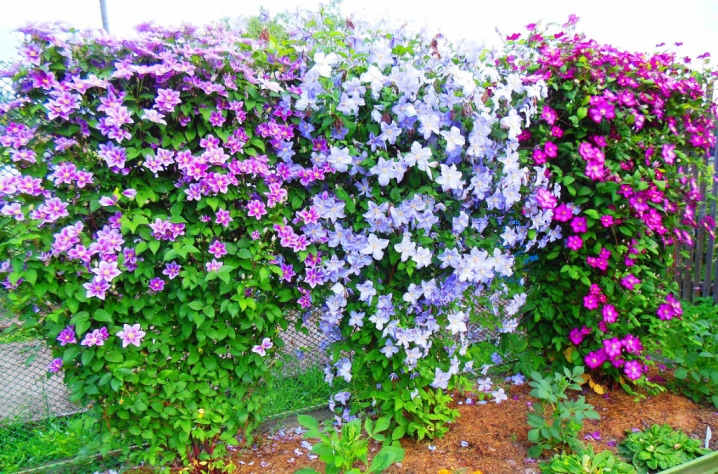
All about bush clematis, see below.







































































































The comment was sent successfully.